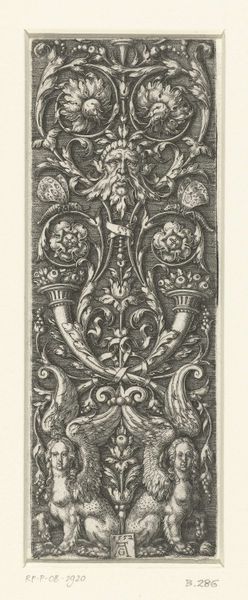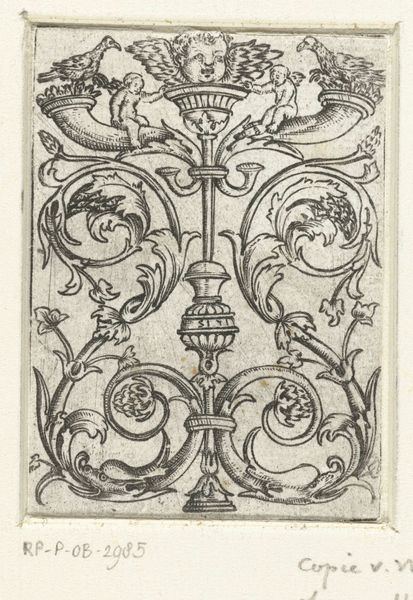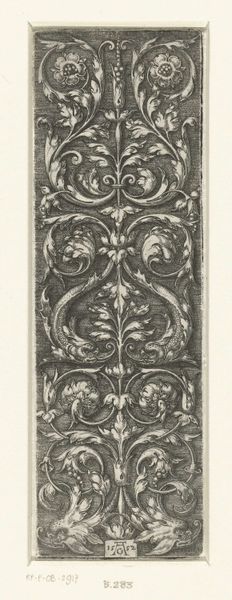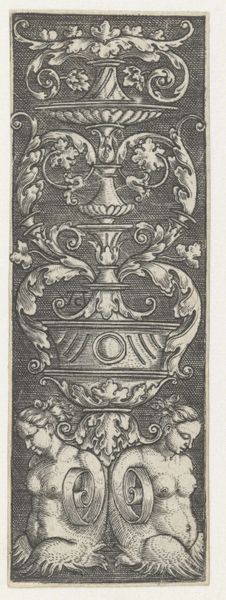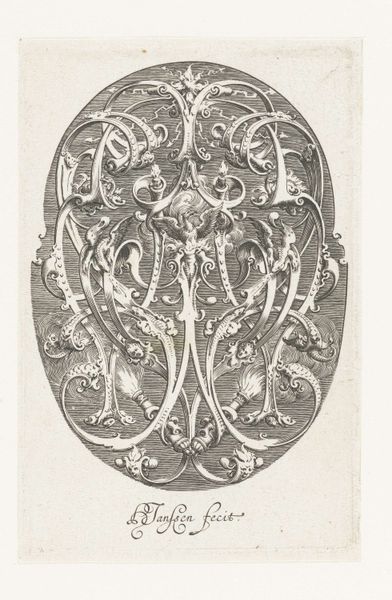
drawing, carving, print, metal, engraving
#
drawing
#
carving
# print
#
metal
#
old engraving style
#
woodcut effect
#
figuration
#
form
#
11_renaissance
#
child
#
line
#
pen work
#
genre-painting
#
northern-renaissance
#
academic-art
#
engraving
#
miniature
Dimensions: height 145 mm, width 41 mm
Copyright: Rijks Museum: Open Domain
Editor: So, this is Heinrich Aldegrever's "Candelabra with Leafy Tendrils and Four Children," from 1532. It's currently at the Rijksmuseum, an engraving on metal. The detail is amazing. It seems to show these children holding up a rather ornate candelabra... How do you interpret the overall design? Curator: The candelabra itself becomes a kind of symbolic tree of life. Notice how the leafy tendrils coil upwards, almost reaching for something. The children, placed at key structural points, become supports, but also suggest a burgeoning future, new growth holding up tradition. Consider that this print circulated during the Renaissance, a time of rebirth deeply concerned with lineage. Editor: Lineage, yes, like ancestors holding up the family name? It is striking how the children at the base seem burdened! Curator: Indeed! Are they literally holding it up, or is it symbolic? These children are also putti, evoking associations with love and divinity. So, the 'burden' might instead be seen as a blessed responsibility – supporting beauty, art, even faith. What emotional undercurrents does the repetition of cherubic figures elicit? Editor: Hmm, now I'm noticing the one child almost looks afraid. It suggests a mixed feeling about this 'blessed' responsibility. I guess the symbolism of family legacy can be complex. Curator: Precisely. Aldegrever is prompting us to think about not only continuity, but also the psychological weight of inherited values, visualized through seemingly innocent forms. Symbols shift with each generation, shaped by changing circumstances. Editor: This makes me realize how loaded even decorative art could be in terms of its imagery and symbolism. Curator: Absolutely, even a candelabra design can be seen as encapsulating profound ideas about cultural memory.
Comments
No comments
Be the first to comment and join the conversation on the ultimate creative platform.
